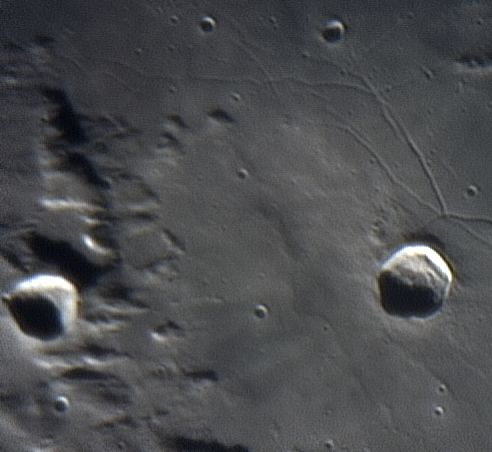
Triesnecker crater is 26 kilometers in diameter and 2.7 kilometers deep with a central mountain complex. The crater was named after Franz de Paula Triesnecker, an 18th Century Austrian born mathematician and astronomer. A system of rilles extends from its eastern flank, known as Rimae Triesnecker. It is located between Mare Vaporum and Sinus Medii on the surface of the Moon.
Rimae Triesnecker is believed to be sinuous in nature. Sinuous rilles like the Triesnecker rille system are thought to have been formed by running lava. Possibly the lava cut across the mare or maybe it cut a tunnel just under the surface, and the roof of the tunnel colapsed at a later date. This system is the densest system of rilles on the visible face of the Moon.
Ukert crater is 23 kilometers in diameter and about the same debth as Triesnecker. The crater has high walls with light terraces and a flat floor.
Move your cursor over these features, and a pop-up window will appear that identifies the feature.
This image was taken with a ToUcam webcam. Individual frames from the video captured with the ToUcam were aligned and stacked using Registax. The image was taken from my backyard in Scottsdale, Arizona, with a Mewlon-210 scope carried on an EM-10 mount. A Takahashi VariExtender was used to lengthen the focal length of the scope to about f18.4.
Moon
July 20, 2003
Image by Sid Leach
Scottsdale, Arizona
Recent Images.
Complete list of images.
Description of equipment used to acquire images.
Home
Feedback and comments should go to Sid